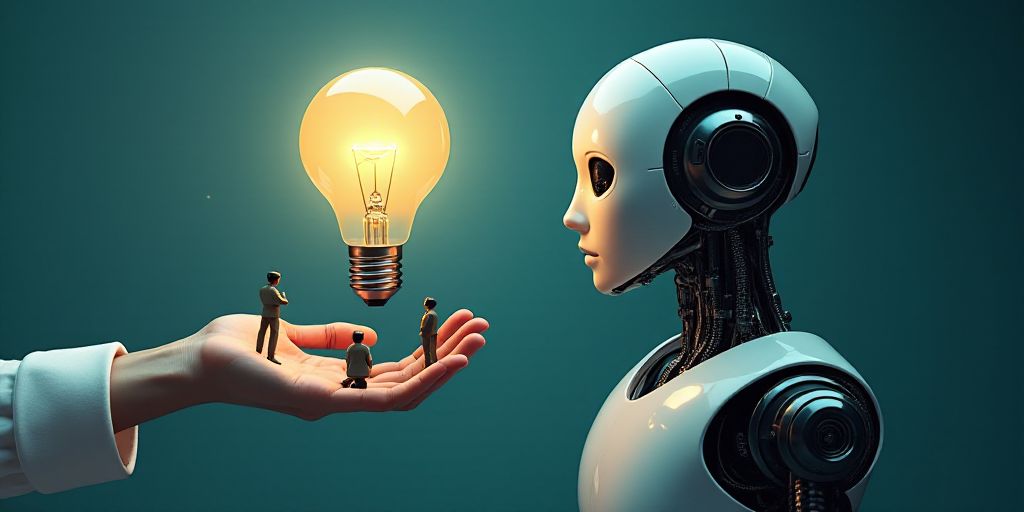Introduction
Artificial Intelligence (AI) is revolutionizing the workplace, not just in terms of productivity but also employee well-being. From monitoring mental health to preventing workplace risks, AI is being integrated into workspaces with the goal of enhancing workers’ quality of life. However, its implementation also raises ethical dilemmas, privacy concerns, and impacts on job stability. How is the work environment changing with AI, and what can we anticipate in the future?
Monitoring Employee Mental Health
AI algorithms can analyze real-time data to detect signs of stress, anxiety, or burnout in employees. Tools like wearable sensors, wellness apps, and voice analysis can measure an employee’s emotional state and provide recommendations to improve their well-being. For instance, AI learning algorithms are already being used to assess stress levels by detecting patterns in voice tone and heart rate.
Providing Emotional Support and Virtual Assistance
Some companies use AI-powered chatbots to provide emotional support to their employees. These tools can offer basic counseling on work-related stress or redirect workers to mental health services. Moreover, they can alleviate the workload of human resources teams by facilitating communication between employees and specialists.
Designing Wellness Programs
By analyzing data on employees’ health habits and job performance, AI enables the creation of personalized routines that cater to each employee’s needs, promoting their well-being. For example, some companies have implemented apps that suggest ergonomic exercises or relaxation routines based on an employee’s behavior and daily activities.
Identifying Workplace Risks
AI’s application in preventing workplace risks is one of its most promising uses. AI systems can analyze data collected from workplace sensors to identify potentially hazardous conditions, such as incorrect postures, accumulating fatigue, or exposure to harmful agents. They have also been used in sectors like construction to predict workplace accidents by analyzing previous patterns.
Training and Development
Automated learning has also transformed workplace training. AI allows for the design of personalized training programs tailored to each employee’s skills and needs. This not only enhances learning efficiency but also helps employees adapt to new technologies and changes in their roles.
Pros and Cons of AI in the Workplace
While AI offers numerous benefits regarding workplace safety and health, its implementation is not without challenges. Among the advantages of incorporating AI in the work environment are:
- Increased risk prevention: AI allows for the detection of potential risks before they become serious issues.
- Improved mental well-being: Monitoring mental health and providing access to wellness programs can reduce workplace stress and improve employees’ mood.
- Automation of repetitive tasks: This allows employees to focus on more strategic and creative tasks that provide greater personal satisfaction.
However, the risks and challenges of implementing AI in the workplace include:
- Privacy concerns: Collecting data on employees’ health and emotions raises questions about the handling and protection of this information.
- Risk of excessive surveillance: Constant monitoring of employees could create a climate of distrust and increase pressure on them.
- Impact on employment: Automation could reduce the demand for certain jobs, thus creating job uncertainty.
The Future of AI in the Workplace
In the coming years, AI is expected to evolve towards hybrid intelligence models where humans and machines collaborate to enhance employee health and well-being. To achieve effective integration, companies should focus on:
- Establishing clear regulations to protect employees’ data privacy and security.
- Encouraging employee training to adapt to new technologies.
- Ensuring ethical AI implementation that respects employees’ rights and well-being.
- Centering AI applications on human well-being will be crucial to maximizing its benefits without compromising workers’ safety and job stability.
Key Questions and Answers
- Q: How is AI impacting employee well-being? A: AI is being used to monitor mental health, provide emotional support, design personalized wellness programs, identify workplace risks, and enhance training and development.
- Q: What are the benefits of AI in the workplace? A: Benefits include increased risk prevention, improved mental well-being, automation of repetitive tasks, and more efficient training.
- Q: What are the challenges of implementing AI in the workplace? A: Challenges include privacy concerns, risks of excessive surveillance, and potential impacts on employment.
- Q: How can companies effectively integrate AI in the workplace? A: Companies should establish clear data protection regulations, encourage employee training, ensure ethical AI implementation, and prioritize human well-being.






